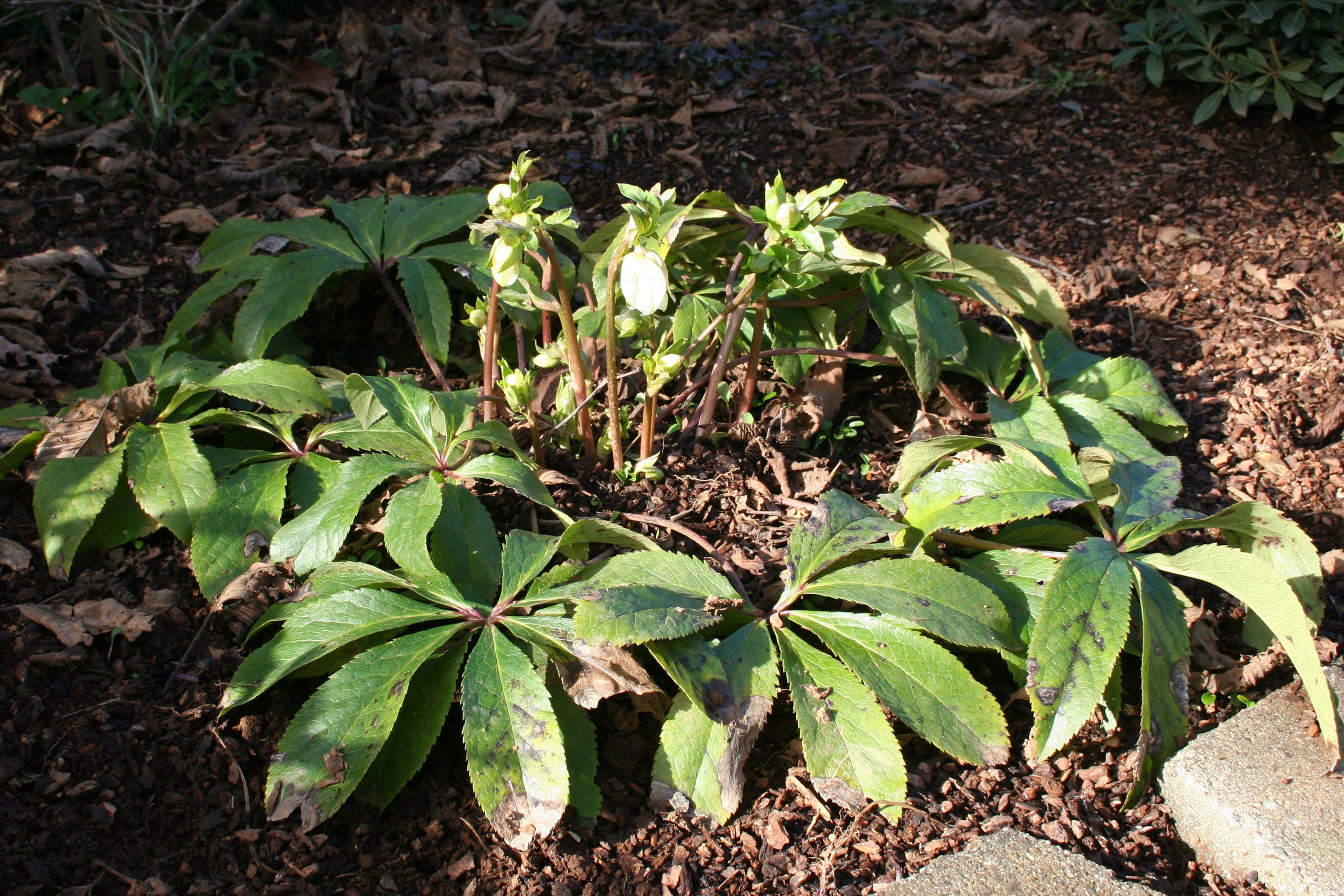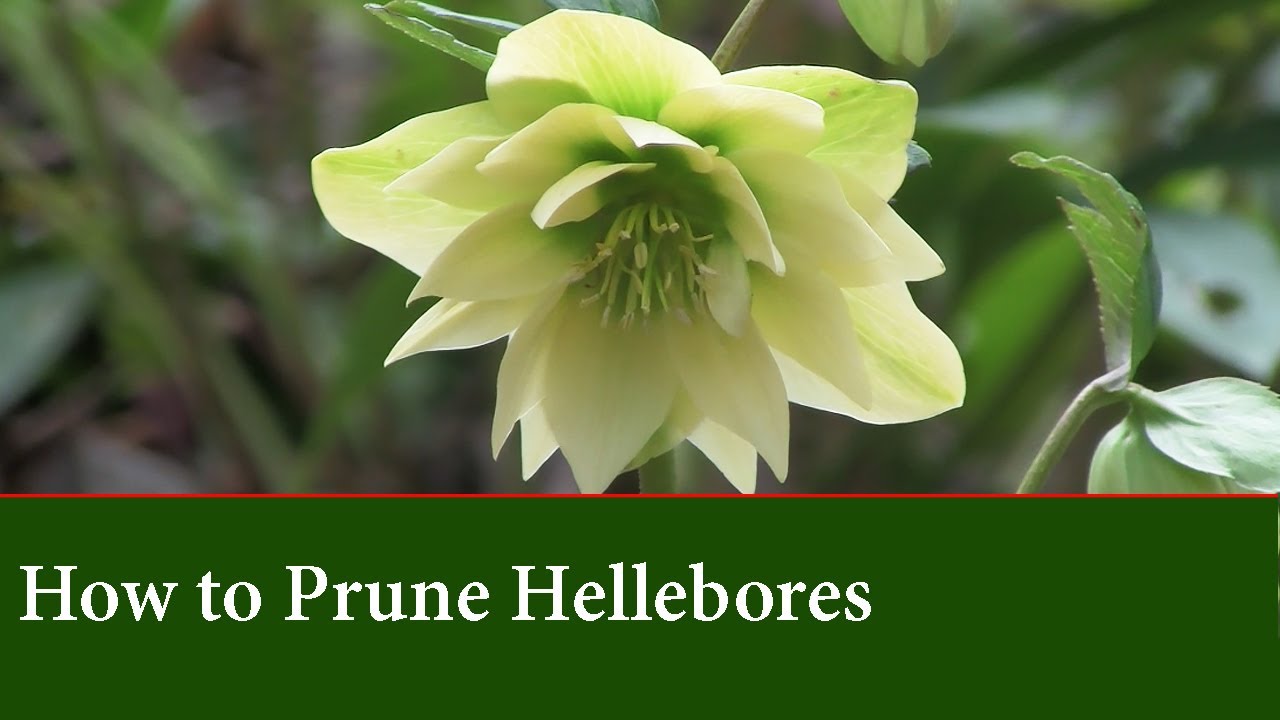To prune a hellebore, remove dead or damaged leaves and flowers in early spring. Hellebores benefit from regular pruning to promote new growth and maintain their overall health and appearance.
Pruning helps remove old foliage, prevents the spread of diseases, and encourages better flowering in the next season.

Credit: northcoastgardening.com
Why Pruning Hellebores Is Important
Pruning hellebores is crucial as it promotes healthier growth and flowering, removes diseased or damaged foliage, and enhances the overall appearance of the plant. Regular pruning encourages new growth and ensures the plant remains vigorous. By removing any dead or diseased foliage, you reduce the risk of spreading diseases and create a cleaner, tidier plant.
Additionally, pruning helps to maintain the shape and size of the hellebore, preventing it from becoming unruly or overcrowded. When pruning, it’s important to use clean, sharp tools and make clean cuts just above a leaf node. Remember to wear gloves as some hellebores can be toxic.
Overall, pruning hellebores is a simple and necessary task to keep these beautiful plants thriving in your garden.
When To Prune Hellebores
Pruning hellebores is best done in late winter or early spring, before new growth emerges. It is important to avoid pruning during the flowering period, to ensure continuous blooming. Consider the weather conditions before pruning, as extreme cold or frost can damage the plants.
When pruning hellebores, start by removing any dead or damaged foliage and stems. Cut the stems back to the base of the plant, using sharp, clean pruners. It is also recommended to remove any old foliage to promote better air circulation and reduce the risk of diseases.
Remember to dispose of the pruned material properly and provide the plants with adequate water and nutrients after pruning. By following these guidelines, you can achieve healthier and more vibrant hellebores in your garden.
Tools And Equipment Needed
Tools and equipment needed to prune a hellebore include clean and sharp pruning shears for precise cuts. Protect your hands with gloves, and keep them safe from potential hazards. Maintain a clean and hygienic environment by using a disinfectant spray or solution.
These tools will help you effectively prune your hellebore plant.
How to Prune a Hellebore in 6 Easy Steps
Step 1: Assess The Hellebore Plant
Assess the overall condition of the hellebore plant, looking for any dead or weak stems.
Step 2: Prepare The Pruning Tools
Cleaning and disinfecting your pruning shears is an important step before pruning your hellebore. Ensure that the shears are sharp enough to make clean cuts on the plant. Properly maintaining your tools will prevent the spread of diseases and promote the health of your plants.
After each use, wipe the blades of the shears with a cloth soaked in a solution of one part bleach to nine parts water. Rinse the shears with clean water and dry them thoroughly before storing them. This will help remove any potential pathogens that may be present on the blades.
Additionally, regularly sharpening your pruning shears will ensure that they are always ready for use and able to make precise cuts. By following these guidelines, you can effectively prepare your pruning tools for the task of pruning your hellebore.
Step 3: Remove Dead Or Damaged Foliage
To properly prune a hellebore, it is important to remove any dead or damaged foliage. Cut back any stems that are broken or show signs of disease at the base. Discard any foliage that appears unhealthy as well. Pruning this way helps to promote the plant’s overall health and appearance.
It is recommended to regularly inspect the hellebore for any signs of damage or disease and promptly address them. By following these steps, you can ensure that your hellebore remains vibrant and thriving throughout the growing season. Proper pruning techniques will help maintain the plant’s beauty and encourage new growth.
Keep in mind to always use sharp and clean pruning tools to minimize the risk of spreading diseases.
Step 4: Prune For Optimal Growth And Shape
Pruning a hellebore properly is crucial for its optimal growth and shape. To achieve this, it’s important to cut back any overcrowded or crossing stems. Additionally, trimming long or leggy stems helps encourage bushier growth. Pruning should be done carefully, following these guidelines to ensure the best results.
By avoiding overused terms and phrases and keeping sentences concise, the content remains engaging and easy to understand. Varying the expressions used at the beginning of paragraphs also keeps readers interested. With these steps in mind, you’ll be able to prune a hellebore effectively and promote its healthy development.
Step 5: Clean Up And Dispose Of Pruned Material
Pruning a hellebore is essential for its health and appearance. Once you have completed the pruning process, it is crucial to gather the pruned stems and leaves. These materials should be disposed of properly to prevent the spread of diseases.
By doing so, you can ensure that your hellebore remains disease-free and continues to thrive. Proper disposal includes not composting any infected material and bagging it to be disposed of in a landfill. This will mitigate the risk of infecting other plants in your garden.
By following these steps and guidelines, you can successfully prune your hellebore and maintain its beauty for years to come.
Step 6: Provide Post-Pruning Care
Pruning a hellebore requires post-pruning care, which includes applying a balanced fertilizer. After pruning, make sure to thoroughly water the plant to help it recover and promote new growth. Providing proper care after pruning is crucial for the health and vitality of your hellebore.
By following these guidelines, you can ensure the best results for your plant and enjoy its beautiful blooms for many seasons to come. Remember to use a fertilizer that is appropriate for hellebores and follow the instructions on the packaging for the correct application.
Additionally, consider mulching around the base of the plant to retain moisture and suppress weed growth. With a little extra care and attention, your pruned hellebore will thrive and continue to delight you with its stunning flowers.
Tips And Precautions
To properly prune a hellebore, it is essential to wear protective gloves to prevent skin irritation. Before pruning, make sure you verify the correct hellebore species and understand its specific pruning requirements. Throughout the year, regularly monitor for pests and diseases to maintain the health of your hellebore.
By adhering to these precautions and guidelines, you can ensure a successful pruning process for your hellebore plant.
Frequently Asked Questions On How To Prune A Hellebore
What Is The Best Time To Prune A Hellebore?
The best time to prune a hellebore is in late winter or early spring, before new growth appears. Pruning during this time will not only stimulate new and healthy growth but also allow the plant to recover before the blooming season begins.
How Much Should I Prune A Hellebore?
When pruning a hellebore, it is best to remove any damaged or dead foliage and stems. Additionally, prune the plant to remove any overcrowded or crossing branches. Aim to prune about one-third of the plant, ensuring to maintain its natural shape and form.
Will Pruning A Hellebore Affect Its Flowering?
Pruning a hellebore properly will not affect its flowering. In fact, it can enhance the plant’s overall health and blooming potential. By removing old or damaged growth, you are allowing more space for new growth and improved air circulation, which can lead to more abundant and vibrant flowers.
Conclusion
Pruning hellebores is an essential task that ensures their overall health and beauty. With a few simple steps, you can master the art of hellebore pruning. Start by removing any dead or damaged leaves and flowers to promote new growth.
Be sure to cut the stems near the base without damaging the crown. Additionally, thinning out any overcrowded areas and removing any yellowing or diseased foliage will help maintain the plant’s vitality. Remember to clean your tools between cuts to prevent the spread of disease.
Regular pruning will not only enhance the appearance of your hellebores but also encourage them to produce more blooms. By following these guidelines and taking the time to prune your hellebores properly, you can enjoy a thriving and vibrant garden that will be the envy of all.

